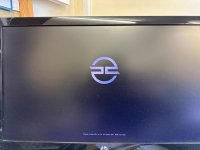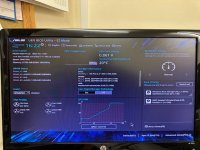Hi All,
Before I reset the PC just asking if anyone has any bright ideas.
PC Specialist supplied desktop in August 2022. A few months ago it presented the fault of not booting from a cold boot. It was very rare and always started when power reset. Now it happens every time PC is cold booted. It freezes on the F2 boot screen. No boot keys work. After several power on and power off it can be caught to enter BIOS and manually boot. After which it works fine and any warm boots complete correctly. It can be powered of and back on without incident.
The following has been done/checked. All completed with no fault unless stated.
No unnecessary devices are connected
Memory diagnostics
MemTest86
Start up Repair, could not complete, chkdsk ran, all ok
Fast startup disabled
sfc/scannow
fixmbr will not run because windows on M2 SSD and not compatible for this drive
Fortect scans. necessary repairs carried out
PSU and connections tested
CMOS battery changed
System image restored. I take system image every three months. Still will not cold boot.
...and probably other things I have forgotten about
I have noticed the mother board (ASUS Prime B560-plus) has an older BIOS 1601. There is a newer version, 2001.
So which should I try next? Update BIOS, reset PC or something else.
I am not convinced a PC reset will resolve it. Windows in on its own hard drive so only apps/programs that must be installed on same drive as Windows will need to be re-installed. Other critical programs are on a separate SSD. Other data on a third SSD.
This is sending me crazy
Thank you in advance for your helpful comments.
Regards,
Paul
Before I reset the PC just asking if anyone has any bright ideas.
PC Specialist supplied desktop in August 2022. A few months ago it presented the fault of not booting from a cold boot. It was very rare and always started when power reset. Now it happens every time PC is cold booted. It freezes on the F2 boot screen. No boot keys work. After several power on and power off it can be caught to enter BIOS and manually boot. After which it works fine and any warm boots complete correctly. It can be powered of and back on without incident.
The following has been done/checked. All completed with no fault unless stated.
No unnecessary devices are connected
Memory diagnostics
MemTest86
Start up Repair, could not complete, chkdsk ran, all ok
Fast startup disabled
sfc/scannow
fixmbr will not run because windows on M2 SSD and not compatible for this drive
Fortect scans. necessary repairs carried out
PSU and connections tested
CMOS battery changed
System image restored. I take system image every three months. Still will not cold boot.
...and probably other things I have forgotten about
I have noticed the mother board (ASUS Prime B560-plus) has an older BIOS 1601. There is a newer version, 2001.
So which should I try next? Update BIOS, reset PC or something else.
I am not convinced a PC reset will resolve it. Windows in on its own hard drive so only apps/programs that must be installed on same drive as Windows will need to be re-installed. Other critical programs are on a separate SSD. Other data on a third SSD.
This is sending me crazy
Thank you in advance for your helpful comments.
Regards,
Paul
Last edited:


